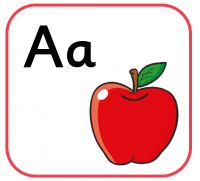Phonics Progression: Laying a Strong Literacy Foundation from Reception to Year Two
Introduction
A smooth phonics progression is crucial in laying the foundations for effective literacy development. This blog explores the systematic steps that guide children from recognising simple sounds to mastering complex sentence structures. Establishing a clear and engaging phonics journey is essential for building a lifetime of reading skills.
The Importance of a Structured Phonics Progression
A structured phonics progression systematically introduces the building blocks of reading. It provides a clear pathway that supports the natural development of sound recognition and word formation. This organised approach underpins successful literacy acquisition in early educational settings.
A systematic approach to phonics instruction caters to a variety of learning styles and paces. It ensures that every pupil receives the targeted support they need to move confidently through the stages of literacy. By establishing a solid foundation, teachers can address individual challenges and celebrate each milestone achieved.
Benefits of Phonics Instruction in Early Literacy
Explicit phonics teaching focuses on clear, direct teaching of sound-letter relationships. This method helps children quickly learn to recognise and differentiate between individual phonemes. As a result, they develop a strong understanding of the fundamentals of language. 
The deliberate practice of phonics not only aids in decoding words but also bolsters reading fluency. A well-implemented phonics programme significantly enhances overall literacy outcomes. This improvement is evident in the increased confidence and engagement witnessed in the classroom.
Step-by-Step Phonics Progression from Reception to Year Two
Reception
In Reception, the focus is on recognising individual sounds and beginning to associate them with letters. Teachers introduce simple phonemes through playful activities and sound games. Visual aids and repetition solidify the connection between spoken sounds and written symbols. Children are encouraged to express the sounds in a fun, interactive manner. This initial step establishes the groundwork for confident sound recognition. They are also introduced to blending and segmenting words and are introduced to some vowel and consonant diagraphs/trigraphs
Year One
As children progress into Year One, the curriculum expands to broaden knowledge of graphemes and phonemes, learning alternative spellings for known words, reading and spelling words with split digraphs with a focus on increasing fluency and accuracy in reading. Teachers guide pupils in merging individual phonemes to create meaningful words. Interactive activities further develop their ability to decode unfamiliar words. Group activities and tactile resources promote collaboration and reinforce learning. This transition marks a significant step in moving from isolated sounds to complete words.
Year Two
In Year Two, the phonics programme evolves to incorporate more complex word structures and multisyllabic terms. Teachers introduce advanced blending techniques and contextual reading exercises. Pupils are challenged to apply their foundational knowledge to new and diverse text forms and the focus shifts from decoding to spelling patterns and rules. This stage reinforces earlier learning while encouraging critical thinking and analysis. The added complexity helps solidify literacy skills and prepares pupils for independent reading.
Throughout the progression, consistent monitoring and assessment ensure that every pupil receives tailored support. Teachers utilise both formative and summative evaluations to track advancements in literacy. This steady feedback loop allows for timely interventions and adjustments. Tactile resources and interactive methods remain integral in maintaining pupil engagement. The collaborative effort between teachers, pupils, and innovative tools fosters an enriching learning journey.
Early Targeted Interventions for Improved Literacy Outcomes
Early targeted interventions play a critical role in supporting struggling readers. By identifying difficulties early, teachers can implement strategies to address specific challenges. This proactive approach ensures that no child is left behind in their literacy development.
Targeted phonics interventions are especially effective in boosting confidence and academic performance. They provide customised support that addresses unique learning needs within diverse classroom settings. Such measures lead to significant improvements in literacy outcomes, particularly in schools facing academic challenges.
Innovative Methods in Phonics Teaching
Modern approaches to phonics teaching incorporate technology and interactive methodologies. Innovative methods focus on engaging pupils through multimedia resources and collaborative learning. These contemporary techniques bridge the gap between traditional teaching and digital advancement.
Compared to conventional methods, innovative strategies offer a more dynamic and adaptable learning experience. They encourage creativity and personalised learning paths that can be adjusted to suit individual pupils.
Empowering Teachers with Practical Strategies and Expert Knowledge
Practical classroom strategies are essential for effectively teaching phonics in diverse educational environments. Teachers can utilise a range of hands-on activities and structured exercises to reinforce learning. These immediately applicable methods empower teachers to address the unique challenges in literacy education.
Conclusion
A structured phonics progression from Reception to Year Two lays the vital foundation for early literacy. Explicit phonics instruction, coupled with tactile and interactive resources, can transform the learning experience. By embracing innovative teaching methods and targeted interventions, teachers empower every child to achieve literacy success.
Looking for More Information?
Visit our Key Stage One Literacy resource!

